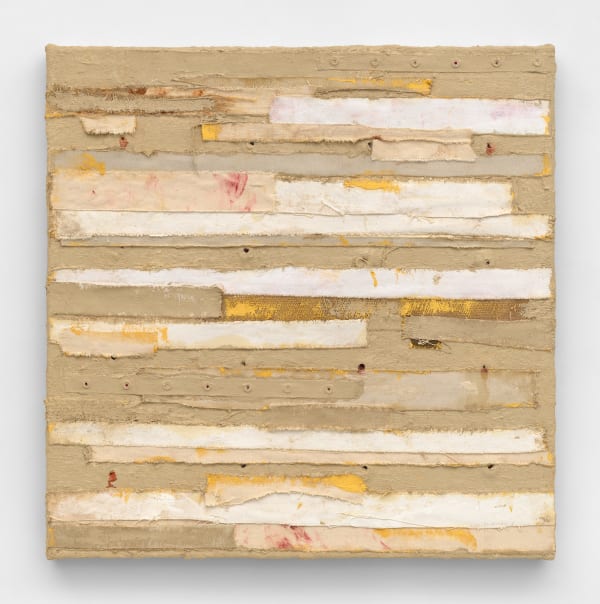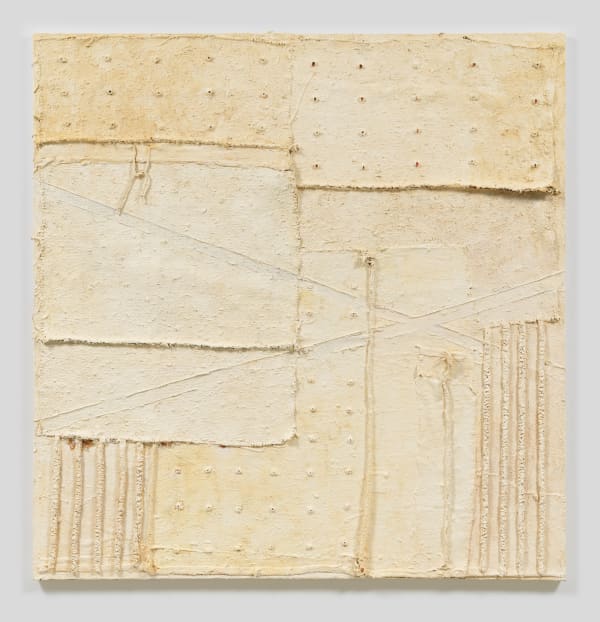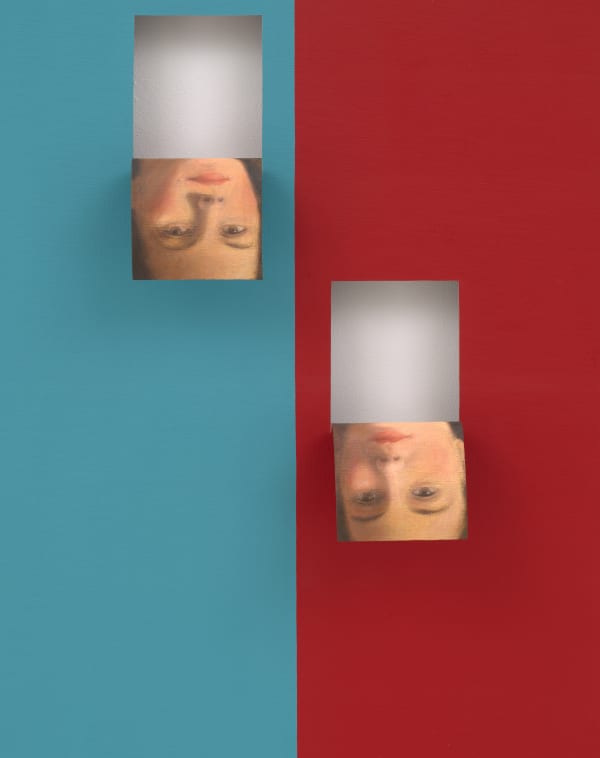Frieze New York (Online)
May 6 – 15, 2020
Taking its title from a 2014 conceptual work by Luis Camnitzer, Meanwhile, Alexander Gray Associates’ digital presentation for Frieze New York's online platform featured artwork by eight Gallery artists, Luis Camnitzer, Melvin Edwards, Harmony Hammond, Jennie C. Jones, Betty Parsons, Joan Semmel, Valeska Soares, and Hugh Steers. Bringing together a selection of paintings, sculptures, and works on paper, Meanwhile celebrated the ability of art to transcend its material constraints—to inspire, give hope, and make connections.
Expanding on this idea of transcendence, Camnitzer’s Meanwhile (2014) presents viewers with an empty corked bottle that boasts a cryptic engraving, “Meanwhile.” Containing only air, the vessel playfully challenges traditional understandings of interiority and exteriority. Its hollow void is jarringly asynchronous; simultaneously suggesting nothing and (meanwhile) everything, the empty bottles provide viewers with infinite unrealized situations onto which they can project themselves. This projection is key to Camnitzer, who believes that art is, in his words, “the area where one can and should make ‘illicit' connections, connections that are not allowed in disciplinary, fragmented thinking.”
Similarly transportive, Valeska Soares’ Threshold (Red) (2014) consists of red linen book covers arranged around a doorway-like frame. Installed leaning against a wall, the work becomes a portal, inviting viewers to travel through it. This visual act of passage recalls adages about reading, which characterize the activity as being akin to taking a journey. Ultimately framing a void, Threshold (Red) constructs a charged, yet empty space where viewers can enact their own fictions.
Just as the monochromatic frame of Threshold (Red) references a history of minimalist painting, so too does Harmony Hammond’s 2016 “near monochrome” painting Bandaged Grid #3. Distinctly bodily, almost fleshy, the canvas features a gridded field of orifice-like grommets partially obscured by strips of fabric. Alluding to past trauma and what lies beneath—what is covered, obscured, and hidden—the work participates in the narrative of modernist abstraction even as it insists on an oppositional discourse of feminist and queer content.
Like Hammond, Jennie C. Jones challenges reductive understandings of modernism through paintings, installations, sound works, and drawings that integrate visual practices with auditory ones. Her ongoing series of Acoustic Panel Paintings incorporate sound-absorbing materials into their compositions, and often use color to illustrate sonic experiences—resonance, humming, etc. Co-opting devices like the tritone, a musical interval common in jazz, as organizing structures, recent works like Bastard Blues (2015) highlight the connection between minimalism and music, recovering the legacy of the black avant-garde.
Also emphasizing the contributions of black artists and thinkers to modernism, Melvin Edwards creates welded sculptures whose titles and materials reflect his engagement with the history of art, race, labor, and violence. In works like Chibuku (1994), part of his ongoing series of Lynch Fragments, he pays homage to the African nation of Zimbabwe, which he first visited in the 1980s. Taking its title from the most popular beer brewed in the country, Edwards’ abstract sculpture is a nostalgic toast to the community of artists and makers who welcomed him there—and the many drinks they shared.
Meanwhile, Betty Parsons’ Untitled (c.1981) revels in the unfettered joy of pure abstraction. Featuring horizontal bands of shimmering blues, oranges, pinks and greens, the painting typifies Parson’s formalist approach: never hard-edged, not exactly geometric or biomorphic, but always colorful, playful, and bold. Reflecting Parsons’ commitment to capturing what she once termed the “sheer energy” of life, the composition’s spontaneity and veils of pigment expand on the painterly legacy of the New York School and Color Field artists her eponymous gallery represented.
Like Parsons, Joan Semmel was also deeply influenced by Abstract Expressionism. She began her career as an abstractionist before turning to figuration in the early 1970s; the loose brushstrokes of Sol y Sombra (1987) reveal the lasting impact this way of working had on her practice. A celebration of the unbridled freedom of summer, her 1987 canvas portrays a closely cropped supine figure at ease in nature. The solitary nude’s fleshy, undulating curves are offset by gestural streaks of greenery, supporting Semmel’s assertion that she never truly abandoned abstraction.
A one-time student of Semmel’s at Skowhegan School of Painting and Sculpture, Hugh Steers was also committed to representation for the duration of his career, cut tragically short by AIDS at the age of 32. Patriots (1989) marks a departure from the artist’s usual domestic tableaus. Speaking to Steers’ own frustration with the national response to AIDS, the work on paper features a seated man and woman wearing paper bags over their heads in front of an American flag. At once suggesting willful blindness, an execution, and forced isolation, the couple’s unsettling, unseeing forms reach for one another, yet, seated separately, remain distinctly apart. Their proximal solitude recalls that of Edward Hopper’s lonely figures, and underscores contemporary society’s hunger—and inevitable failure—to fully connect.
Literalizing this failure, in Valeska Soares’ You and I (2011) two gilded teacups are separated, yet tethered together by a gold chain. Bearing the inscriptions “You” and “I,” the pieces of china illustrate the complicated relationship between distance and desire. (As the artist explains, “Desire is like a vanishing point: every time you go towards it, it recedes a little.”) Romantic and melancholic, Soares’ work serves as a bridge, linking love to longing.
Viewed cumulatively, the works in Meanwhile speak to our current condition. Together, yet apart, we look to art now more than ever to bring us joy, to remind us of past and future pleasures, to expose us to new ideas and perspectives, and to unite us. Art has the power to transform and inform our current circumstances; indeed, as Camnitzer ultimately concludes, “The work of art does not reach finality in an object, but in a situation.
To support artists during the COVID-19 crisis, Alexander Gray Associates donated a portion of proceeds from the sale of each work in the online presentation to Artist Relief, an emergency initiative that offers financial and informational resources to artists across the United States.
About Frieze New York Viewing Room
Frieze Viewing Room was a new digital initiative that launched with an online edition of Frieze New York. The mobile app and web-based platform was live from May 8 – 15, 2020, with an invitation-only preview May 6 – 7, offering visitors the opportunity to enter over 200 virtual viewing room spaces.

































